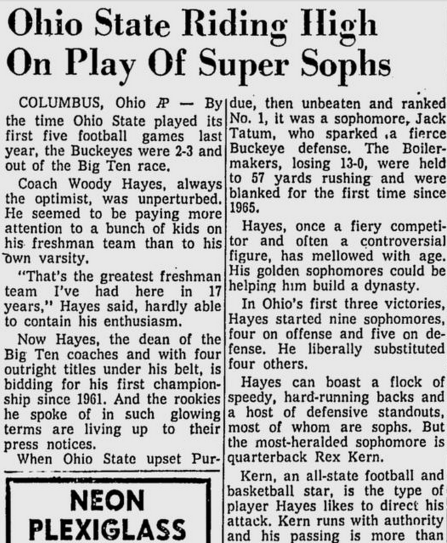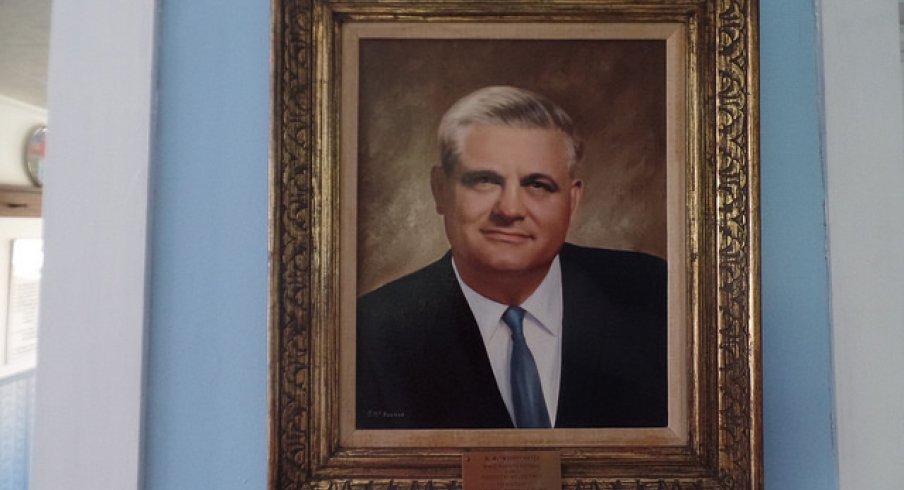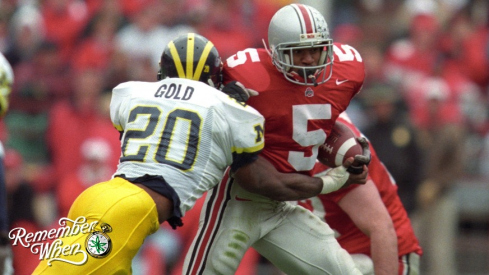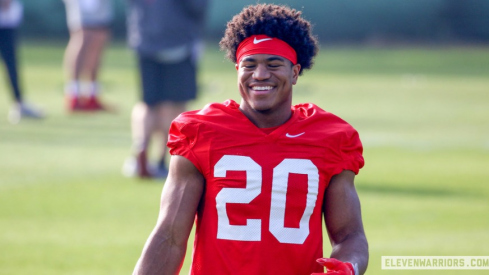History doesn't repeat itself.
That old trope is a lazy, limp way to look at the grand narrative of human events. Yeah, sometimes history rhymes or even forms a nice haiku from time to time, but trying to mush two groups of people or eras together like a little girl making her toy horsies kiss is usually borne out of a desire to relive a time or place that doesn't exist anymore. Simply put: it's often base nostalgia that drives us to see patterns in history.
It's seductively easy for this to happen in sports. Sports history has always been roughly two parts actual scholarship and fifty-eight parts hero worship and storytelling, but I also think that because sports are such an ingrained part of our culture (particularly football here in Ohio), to challenge the accepted narrative or imply that that a connection doesn't really exist is a slap in the face to the people who take comfort in those legends.
The difficulty is to respect the past and learn from it, while also acknowledging that it's not a some instructive Magic 8 Ball which will give you all the answers you need in life.
"Oh Magic Ohio State Ball, since Rex Kern did a thing in 1968, should Urban Meyer start JT Barrett over Cardale Jones?"
BETTER NOT TELL YOU NOW
"Aaahhhh this piece of crap."

Recently the 1968-69 Ohio State football teams have resurfaced a lot in various time capsules, retrospectives, and outright head-to-head comparisons with the current Buckeye squad, especially now that Ohio State is fresh off a national championship and Michigan has hired a shiny new coach that is threatening to re-ignite the Ten Year War. To be fair, some of the parallels are pretty noticeable and easily repeatable:
While Urban Meyer has called this Ohio State team a year ahead of schedule in part because of 11 current starters who are sophomores or redshirt freshmen, that is one less than Hall of Fame head coach Woody Hayes had in his regular starting lineup in 1968. Four other sophomores also started at least one game in 1968 while Meyer has had a handful of other players from the past two recruiting classes make significant contributions as well.
Huh, interesting! I wonder if there are any other similarities?
When Barrett suffered a broken ankle against Michigan, third-year sophomore Cardale Jones stepped in and has guided the Buckeyes to wins over Wisconsin in the Big Ten championship game and over No. 1 Alabama in the Sugar Bowl.
The 1968 Buckeyes had quarterback issues, too. Kern supplanted two-year starter Bill Long, but Long and third-stringer Ron Maciejowski (another sophomore) saved the season on several occasions filling in for an injured Kern.
Oh, cool. Well, I guess that's it so-
As he was walking off the Superdome field last Tuesday, Meyer was quizzed about the "Super Sophs." He needed some prodding but then caught up with the history. As for the comparison to the '13 class, a smile crept across Meyer's face as he walked back toward the locker room.
He's seen what this group has done. And he knows what could be ahead.
Hm, yep okay, thank you! I think we got it!
Are we talking about Ohio State in 2014? Well, we could be, but those descriptions also fit one of the best teams in Ohio State history. While the current Ohio State squad still has one very big challenge left before the job is finished, its story has an uncanny resemblance to the one written by the 1968 Buckeyes.
And so on.
We make these comparisons because they're a way to give each other a sense of deeper meaning to something that we already enjoy. Winning a national championship is pretty awesome, but if we can connect it to a Scarlet and Gray thread going back through the generations, it takes on additional psychic enjoyment for people who care about that kind of thing.
It's ironic, because the 1969 Ohio State football team shares basically nothing in common with the 2015 edition other than age and expectations. Take five seconds to enjoy the mental image of Woody Hayes trying to tell Cardale Jones to dial it back on Twitter for a few weeks during camp. Imagine 1969 Urban Meyer being handed the future stats of his starting QB (50% passing, 10 interceptions in 9 games, barely over 1000 total yards through the air) and being told that he's gotta ride or die with ol' Rexy Kern whether he likes it or not. Allow yourself to wonder what would happen if Jack Tatum and Tyvis Powell had to interact for any period of time whatsoever on the field.
Take five seconds to enjoy the mental image of Woody Hayes trying to tell Cardale Jones to dial it back on Twitter for a few weeks during camp.
The statistics of the 1969 team bear this out as well. It's probably unlikely that Urban will instruct his team to run the ball for an average of 66 times per game, as Woody Hayes did, three yards and a cloud of dust being in full effect. It'd be great if Ezekiel Elliott and company could average almost 500 yards of offense per game like the Buckeyes did 46 years ago, but the chances of the other side of the ball only giving up 275 yards a contest like Tatum and his crew did are pretty slim.
The 1969 team's leading rusher was Jim Otis, who racked up a grand total of 1027 yards on the ground for a nice 4.6 yards per carry. Kern added 583 yards of his own, to go along with 68 completed passes. It's hard to argue with success (almost, we'll get to that in a second), but hopefully Elliott and whoever ends up being QB this season have their sights set slightly higher than that.
Where the 1969 team might be able to impart a lesson, however, is in the ancient art of hubris. It's not a new lesson for Ohio State, because some of our most memorable seasons have been those in which we had a seemingly dominant team that crashed and burned in spectacular fashion, but let's do a little bit of time travelling and see what Sports Illustrated was saying in 1969 about the Buckeyes right before their season ending coronation:
Well, it really might not matter whether Woody's offense or McCullough's defense is the more spectacular. They combine to make up one of the most imposing teams of any season, one that carries a 22-game winning streak into Michigan this week, one that has piled up 371 points in eight Saturdays and, just as important as anything, one that will lose only seven players out of the top 22 for 1970. Kern and Tatum and a lot of other fierce individuals will be back, which suggests that the only thing the Buckeyes have to fear in the immediate future is their preseason scrimmages.
And then they went out the next week and lost to Michigan and first year coach Bo Schembechler in one of the most important upsets in college football history.
Michigan, of course, uses that game as their own cultural/historical/mythological touchstone, and you can expect the story to be rehashed many times on both sides of the rivalry leading up to the final game of the regular season. Like Woody and Urban, Harbaugh and Bo couldn't be less alike in demeanor or approach to the game, but sometimes the prospect of the Ten Year War Part II is just too juicy to pass up.
It's really tempting to look at the 2015 season as a retread of 1969. An accomplished young team coming off a national championship, expected to steamroll their competition. A new coach at an arch-rival, injecting excitement into a matchup that had gone stale in recent years. An final showdown in Ann Arbor, with the home team a likely massive underdog looking to spoil their opponent's entire year. This is the kind of thing we sometimes salivate over, but I believe that what makes sports (and particularly college sports) interesting is the new identity that each season brings.
Look, I love history, way more than most people. And history is great for understanding and contextualizing and seeing an evolution of people and ideas.
But the lessons Ohio State can learn from the 1969 season aren't about noting some vague similarities between the teams. They're about understanding that each game is a test of their work ethic and focus, and if they can prepare for that, they'll be successful in ways that the 1969 Buckeyes never were.



